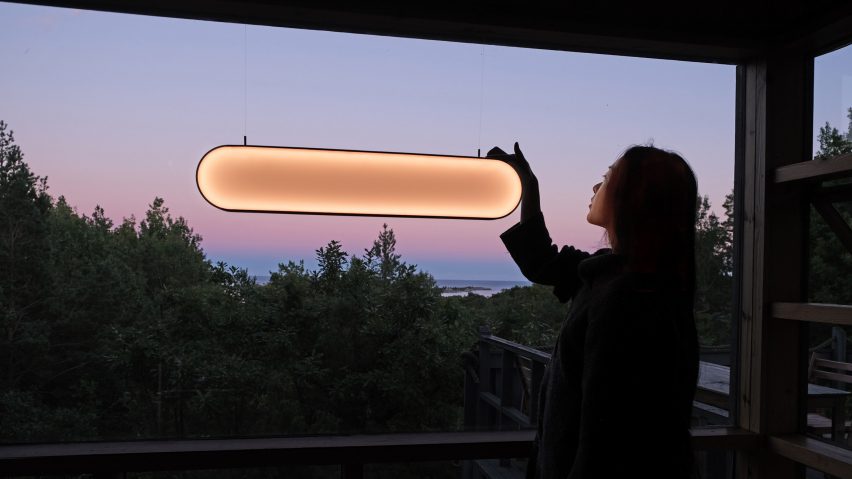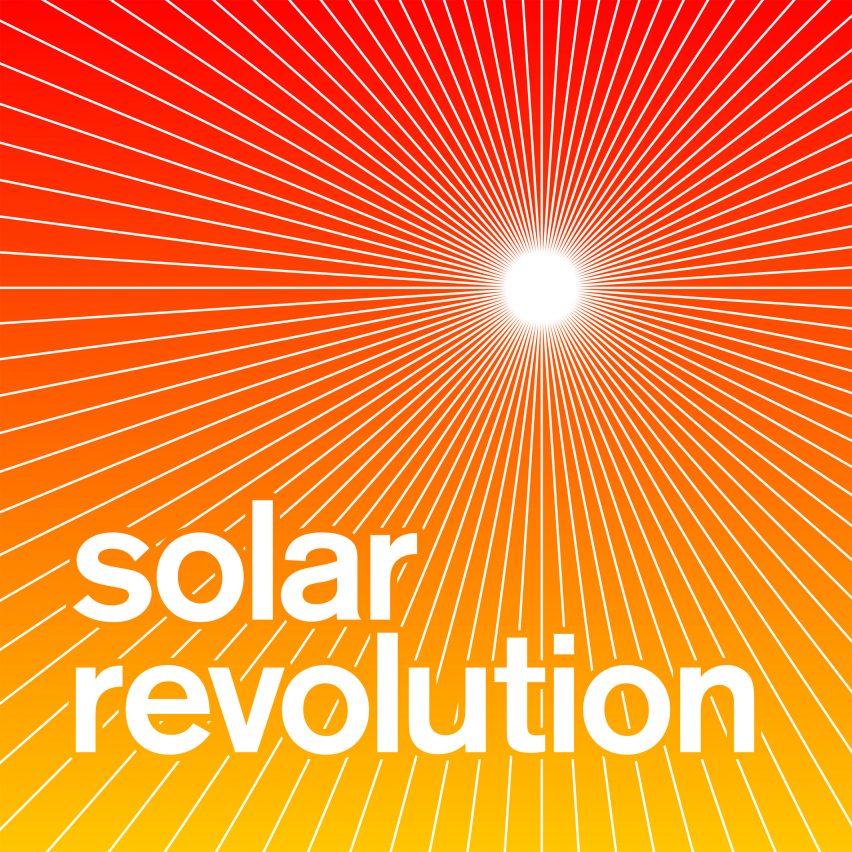
"The design industry needs to imagine a world where we use less energy, full stop"
Architects and designers have a huge part to play in the solar revolution, but they also need to find ways to reduce our energy consumption overall, writes Making Design Circular founder Katie Treggiden.
This year has seen a glut of solar-powered design projects, from headphones and watches to bikes and even the "first production-ready solar car". And today will mark the launch of the inaugural Solar Biennale in the Netherlands – an initiative from self-described "solar designers" Marjan van Aubel and Pauline van Dongen that aims to engage creatives in the renewable energy transition. So has solar power finally reached a tipping point?
We've been hearing about the moment that solar energy will go mainstream for decades now. In 2011, National Geographic published an article by renewable energy expert Daniel M Kammen, in which he claimed that solar energy was now the "fastest growing source of electricity generation", all while cautioning that geopolitical tensions between China and the US might dampen its potential.
In 2021, solar finally became the cheapest source of electricity globally
The following year, Green Age told us "the solar power tipping-point is coming", defining that point as "the moment when solar produces power at the same price as electricity from the grid" – also known as grid parity. Nearly a decade later in 2021, solar finally became the cheapest source of electricity globally.
But now a perfect storm of factors – including last year's long, cold winter, Russia's invasion of Ukraine and dwindling UK gas reserves – has sent energy prices skyrocketing, making everybody take a long hard look at green and locally produced energy. So, are we actually ready for a solar revolution? And if we are, what role can designers and architects play in realising the true potential of this clean and renewable resource?
One of the key issues, according to the founders of the Solar Biennale, is democratising access to solar power. "To facilitate a shift in our perception towards solar, it also needs to be more accessible to a larger group of people," van Aubel told Dezeen last year.
Her solar lamp Sunne (top image) is designed to hang in windows and mimic the changing light profile outside from sunrise until sunset, powered by photovoltaic cells on its reverse.
Elsewhere, Central Saint Martins design graduate Mireille Steinhage has developed a solar-powered heated blanket, which she aims to retail for less than £10. This has extra resonance for the UK's impending cost of living crisis, in which many people are expected to face a choice between "eating and heating" this winter.
Design has a role to play in increasing efficacy, too. By mimicking the wing structure of the rose butterfly, which has evolved over millions of years to absorb heat from the sun, scientists have been able to create thin film solar cells that outperform traditional fixed solar panels at a much lower cost due to tiny holes on their surface that scatter the light.
Researchers in Australia have even developed a solar paint that can absorb water and use the energy from the sun to split the vapour and generate hydrogen – arguably the cleanest energy source of all. By taking inspiration from nature and collaborating with scientists and engineers, designers can take something that is usually high-tech and expensive and make it more beautiful, more effective and more accessible. But none of this addresses the elephant in the room, the fact that global electricity demand is growing faster than renewables.
Green energy supplies are projected to "grow strongly around the world over the next two years", according to an International Energy Agency (IEA) report from July 2021. "But even with this strong growth, renewables will only be able to meet around half the projected increase in global electricity demand over those two years," the report concluded. The other half of the demand will have to be met by fossil fuels. So even as renewables grow, we are still using more fossil fuels because we are using more energy overall.
The world we need to imagine involves more than a simple switch of energy sources
The case for moving to green energy is clear, much like the significant role architects, designers and makers will have to play in this transition – both in terms of designing products and buildings that are powered by renewables and in bringing about the necessary cultural shifts.
But perhaps the design industry has an even bigger, more important part to play. Environmental consultant Mark Shayler says that "creativity is nothing more than imagining a world that hasn't arrived yet". The world we need to imagine involves more than a simple switch of energy sources. The design industry needs to imagine a world where we use less energy, full stop.
Urban planners can design tree-filled cities that are a pleasure to walk and cycle through to reduce our reliance on cars – electric, solar-powered or otherwise. And they can go further, as demonstrated by the Fab Cities model, which asks us to reimagine the fundamental systems we rely on and conceive of cities that produce everything they need using circular models of fabrication, with data being the only thing that has to travel between cities.
Architects can create buildings that are heated and cooled passively without the need for radiators or air conditioning. Projects like Disharee Mathur's passive cooling tiles, made from waste sanitaryware in Jaipur, will make a bigger difference than solar-powered air-conditioning units. Buildings that have bicycle storage instead of car parks, community vegetable gardens instead of lawns and rooftop running tracks instead of basement gyms will all help to reduce our energy usage.
We need a transition to green energy (and we need it fast) but we also need so much more than that
Experiential designers can help us fall in love with the idea of travelling locally, slowly and more mindfully, instead of simply jetting off to far-flung destinations. Industrial designers can make simple changes to electronic devices so that they switch off when not in use and are more easily repaired. And makers and craftspeople can show us the slow value of the handmade versus the mass-produced and available on next-day delivery.
We need a transition to green energy (and we need it fast) but we also need so much more than that, which the organisers of the Solar Biennale recognise. "What defines solar design is that it is much more than a way to provide sustainable energy," they say. "Solar design shapes new relationships between people and their environment."
It is here that architects, designers and makers have the biggest role to play – in imagining a world that hasn't arrived yet, a world in which people recognise their interconnected relationships with their environment and build their lives, spaces and systems accordingly.
Katie Treggiden is an author, journalist, podcaster and keynote speaker championing a circular approach to design. She is also the founder and director of Making Design Circular, a membership community for designer-makers who want to get to feel proud of contributing to a thriving planet with every product they make. She is also a Dezeen Awards judge.
The top image shows Sunne, a solar light designed by van Aubel to be hung in front of windows so it can generate its own energy.

Solar Revolution
This article is part of Dezeen's Solar Revolution series, which explores the varied and exciting possible uses of solar energy and how humans can fully harness the incredible power of the sun.